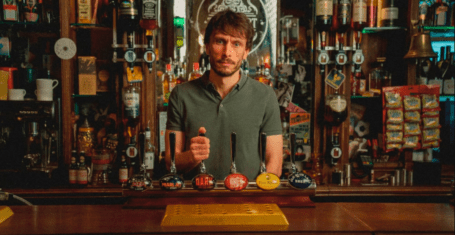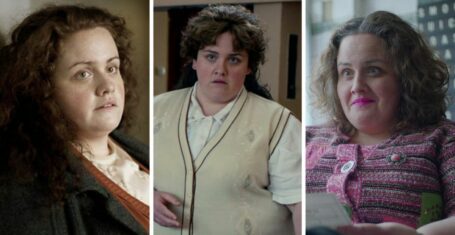
‘It angered me’: Nurse shares what life was like on the wards during the 80s AIDS crisis
‘There was a lot of homophobia. In the papers, everywhere’
The release of Russell T Davies’s harrowing and electrifying It’s A Sin last week has reengerised conversations about HIV, the AIDS epidemic and the tragedy of how many we lost in the 80s when so little was understood about the virus. In the series, AIDS patients are locked in hospital rooms, denied care and treated like pariahs in society. Because of the lack of education around AIDS and what happened in the 1980s, it has left many stunned, questioning whether it was really “that bad”. Well, it was.
Sue Carrington worked as a nurse on hospital wards in Bristol from 1978 to 1990. When she qualified in 1981 she worked in the hematology unit, which specialises in blood disorders. Sue saw the AIDS crisis first hand, from the moment it began hitting the papers as a suspected “strange new cancer” to when Diana held the hand of an AIDS patient and the stigma, gradually, started to crumble. Sue was on the front line, dealing with “silly” anaesthesiologists who wore full PPE unnecessarily in front of AIDS patients and even got pricked with an infected needle herself, meaning she had to wait six weeks for an HIV test.
“It was everywhere,” she told The Tab, “it was all over the news. There was a huge amount of publicity about it. There was a lot of finger-pointing at people who were gay or drug takers, which was sad. But because I worked on the hematology unit, they were fairly well informed about AIDS. But when I worked on a general ward and in theatres [surgery] there was more fear around it because people didn’t understand it as much.”

Via Channel 4
But working in hematology presented its own issues amidst the AIDS crisis. “A lot of our patients were haemophiliacs,” Sue said, “someone whose blood can’t clot”. At this time, haemophiliacs needed to be injected with a drug that helped their blood to clot. The drug was made using blood donations. “But a lot of the blood was imported from America,” Sue told The Tab, “and in America they would pay people to give blood in those days. So a lot of the people giving blood were junkies, and a lot of them were infected with AIDS. Then, of course, as a result, a lot of the haemophiliacs died.” It is estimated that between 6,000 to 10,000 haemophiliacs contracted AIDS in the US during this time, because of this procedure. In the UK at least 1,200 patients died as a result.
Initially, before AIDS was understood to be a blood-borne virus, it was thought to be a unique kind of tumor. Sue remembers this, and talks of walking past patients in wards with the telltale black spot and knowing they were an AIDS patient. “It often presents on the skin. But it infiltrates through your systems like your lymph glands. It’s like a melanoma, it gets inside all your functions.”
The masks and gloves were real, too. “We did wear masks,” Sue says, “when I nursed we always did barrier nursing if somebody had HIV, where you wore masks and gowns and gloves. Because it was the early days when I was on the wards with AIDS, back in the early 80s.”

Sue in 2019
Sue even had a mishap once where, upon injecting an AIDS patient with a needle, she accidentally pricked herself with the unsheathed needle and had to get an HIV test. “It was quite common in hospitals, they’ve changed needles so you can’t do it anymore.” Sue wasn’t scared of catching it but says she was a little “relieved” when she got clear results. Overall, Sue wasn’t scared of the epidemic at all. Moreover, it bothered her when people got edgy about it or treated patients differently. “We weren’t scared. We took precautions. But in America they wouldn’t be nursed, in San Francisco and places they didn’t want to look after AIDS patients – it was horrible.”
Years later, a patient came into hospital with advanced AIDS and Sue and her team were prepping him for surgery. “It was only day surgery but then this one operating department assistant, the person who helped with the anaesthetic, came in with all this gear on. Full PPE, mask and everything. And this patient was like a child. He was a teenager and it was so inappropriate to have this like, zombie spaceman walking towards you. This operating assistant wasn’t even going to be in theatre. It really pissed me off, it angered me. And I was in charge so I told him off.”
Sue also remembers the rampant homophobia that accompanied the crisis. “It was huge talking point. There was a lot of homophobia, homophobia in some of the papers, homophobia everywhere. Not people in the hospital, as such I think, because again, I was a nurse, and the people around me were fairly sensible. But there was definitely heaps of homophobia throughout the country. They felt that it was a gay disease. There was an element of pointy fingers, like ‘you’ve been bad, naughty, you know, or you’re a drug user’. There was a finger wagging. And then I remember seeing a young man come in who didn’t realise he had AIDS… and when he was diagnosed… he was devastated.”
Related stories recommended by this writer:
• 32 million died in the AIDS pandemic but our remembrance is pitiful
• Meet Callum Scott Howells, the 21-year-old Welsh grad who stars as Colin in It’s A Sin
• It’s A Sin taught me more about LGBTQ+ history and sex education than school ever did





















